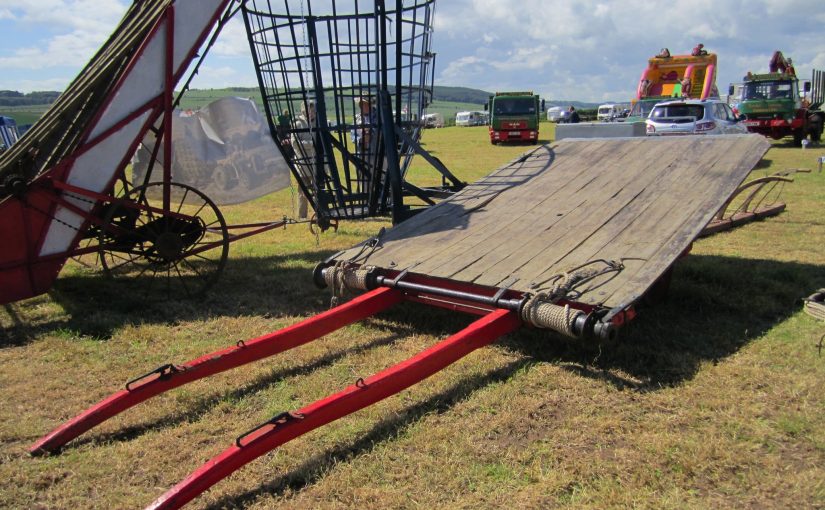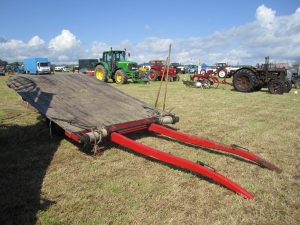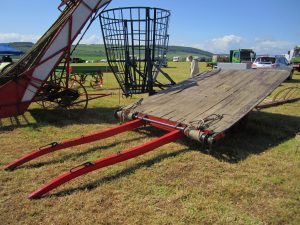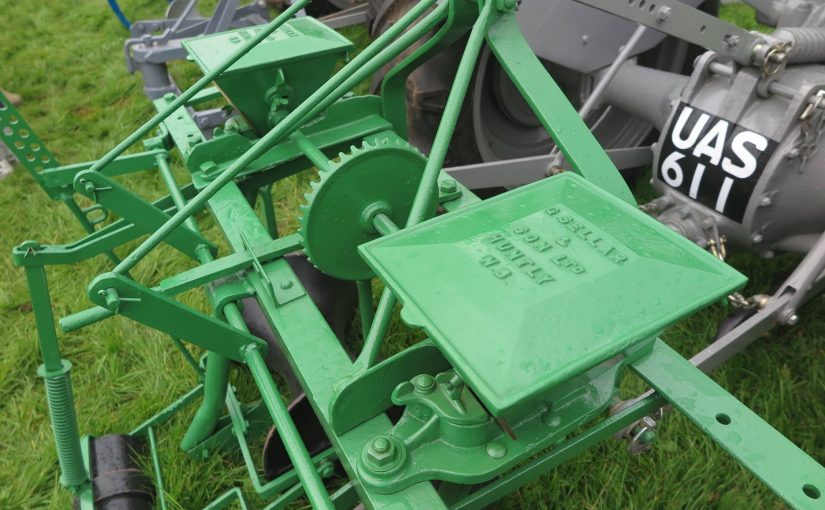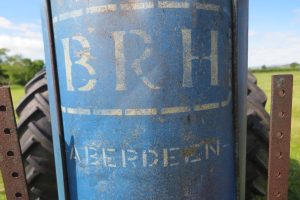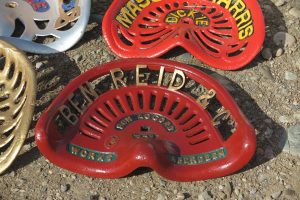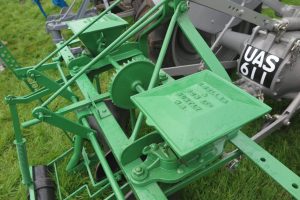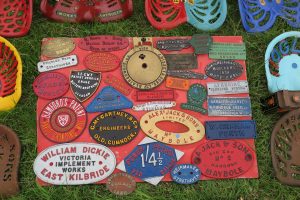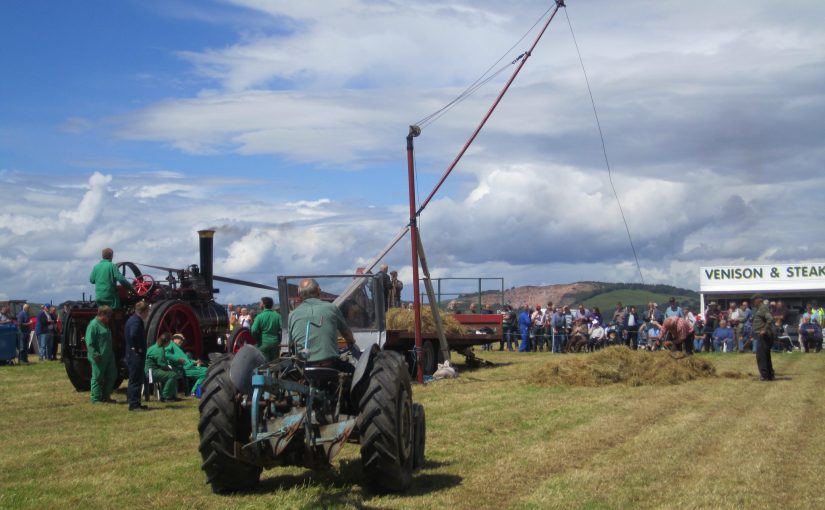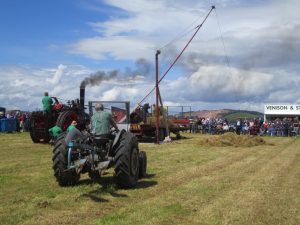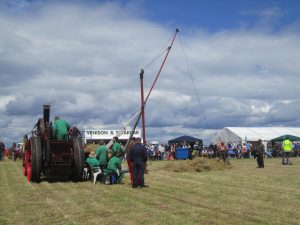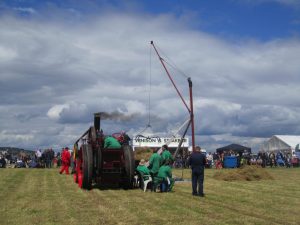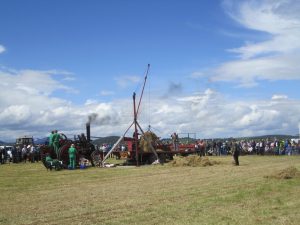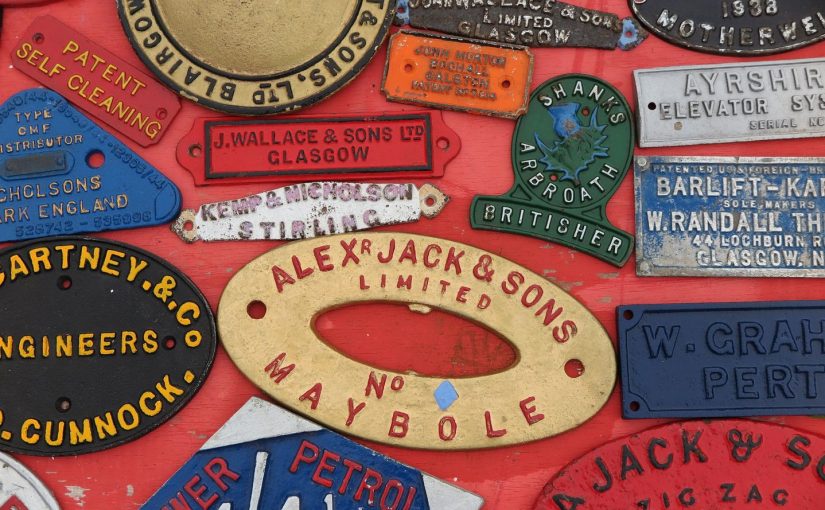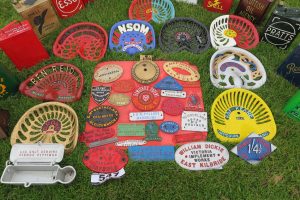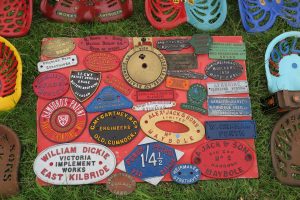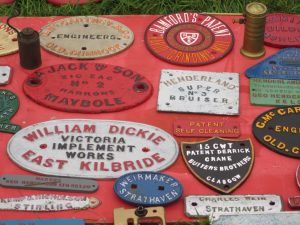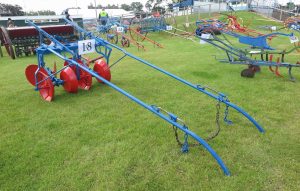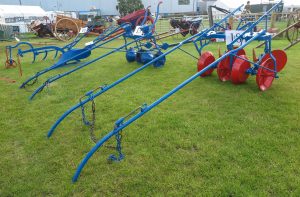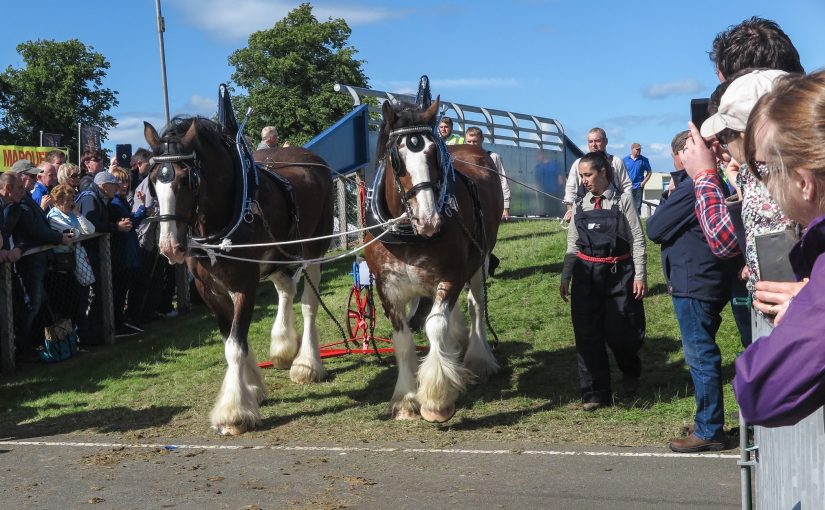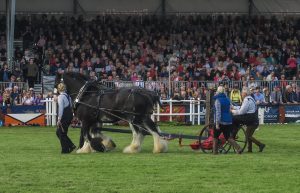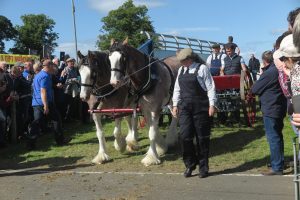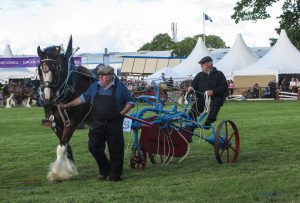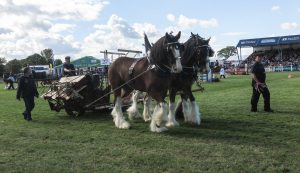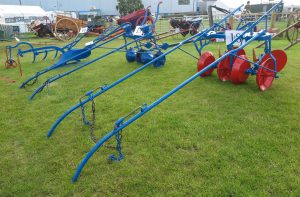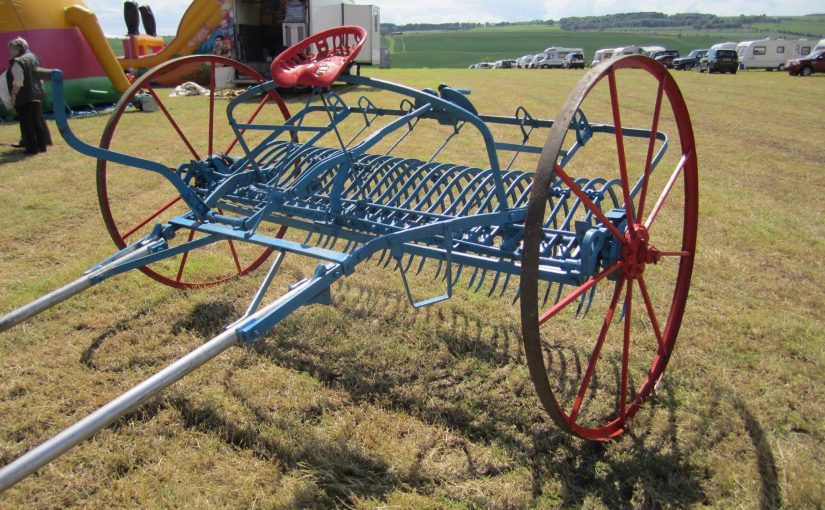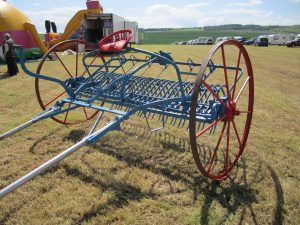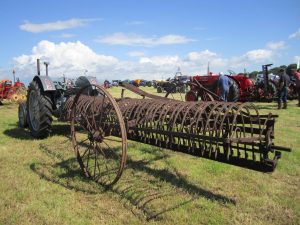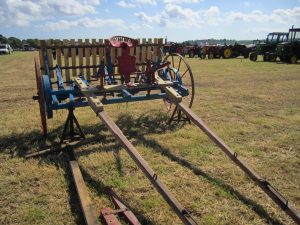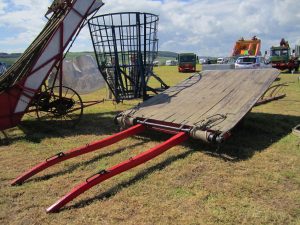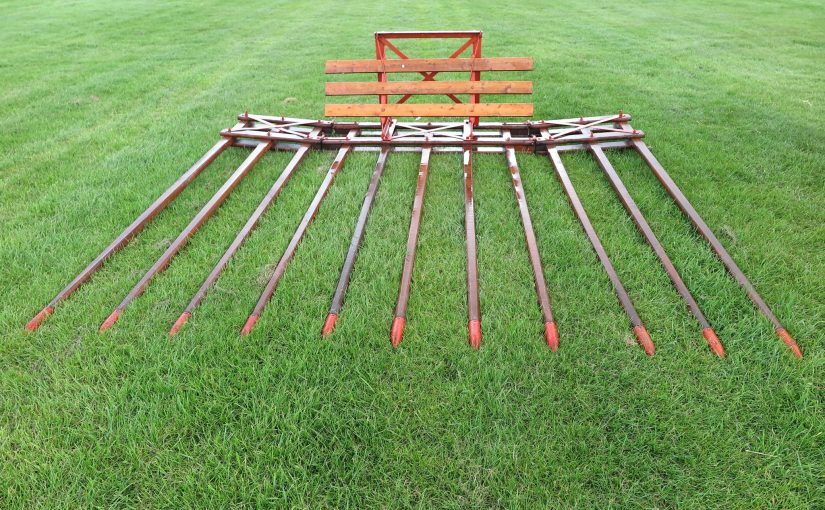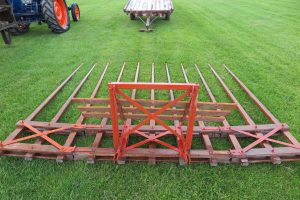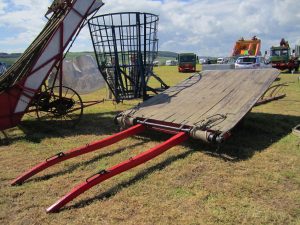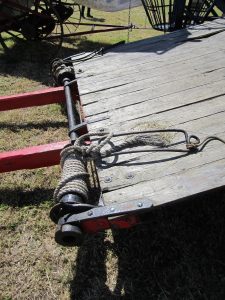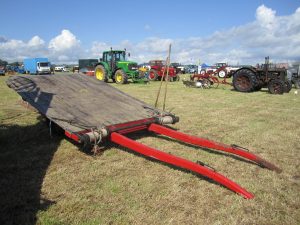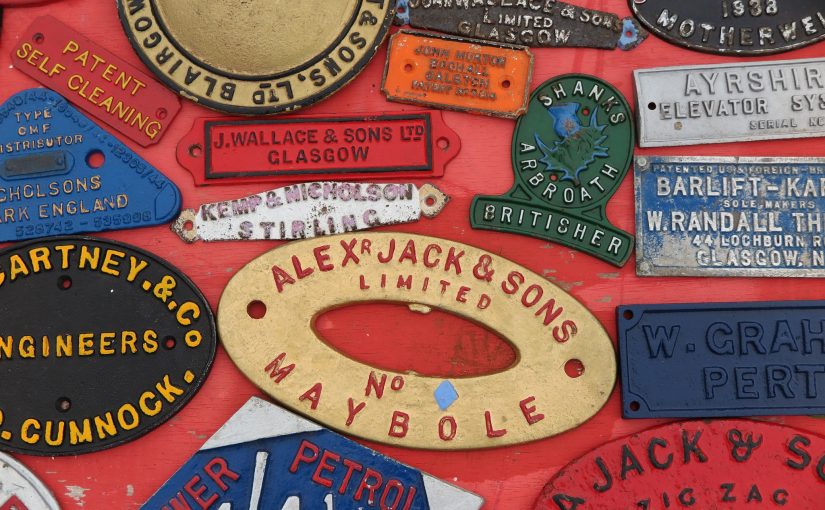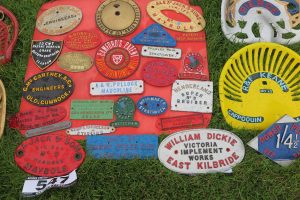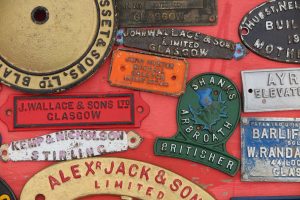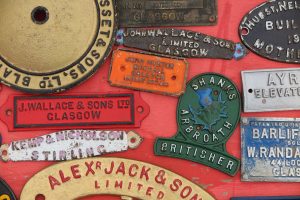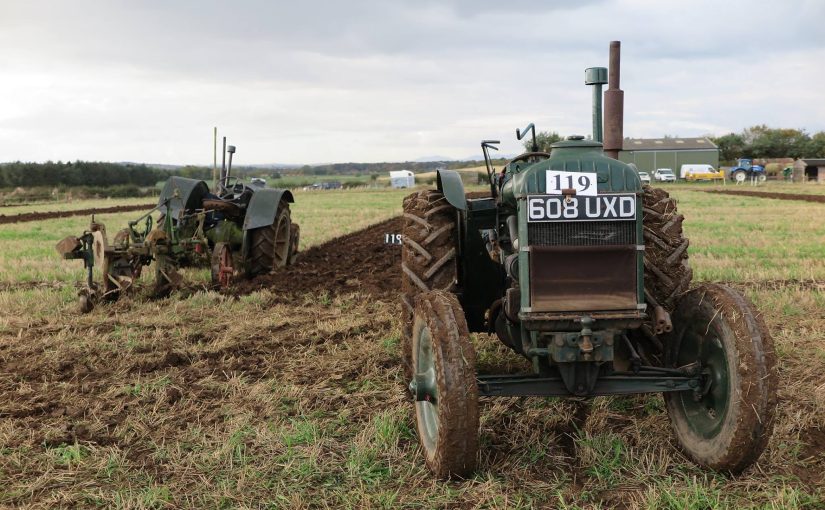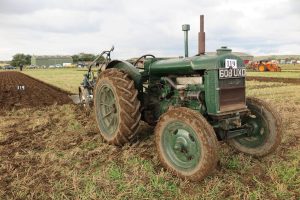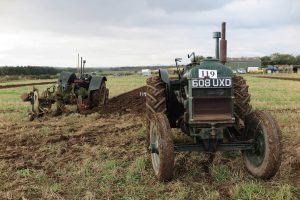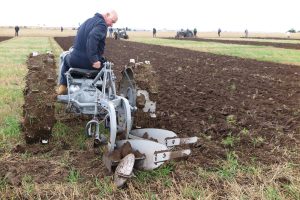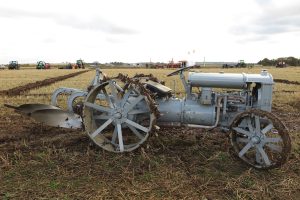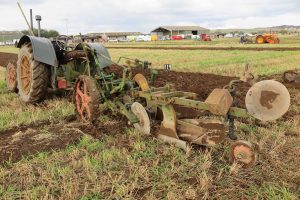The 1880s and 1890s witnessed the introduction of a number of new implements and machines for the hay field. These helped revolutionise haymaking, including the amount of effort and time taken to cart the crop to the farm.
One such innovation was the triangular rick lifter. This was developed by a firm of joiners at Campbeltown, Argyll. It was described at length in the North British Agriculturist of 19 June 1889:
“The introducer, or as I might almost say, the inventor of this apparatus is Mr P. Mackay, of Messrs P. Mackay & Co., joiners and blacksmiths, Campbeltown. The idea was first given to Mr Mackay by a Mr Alexander, an Irish gentleman, who has a shooting in Campbeltown, and who had seen it adopted in a rougher style om Ireland, but in which district I have not learned.
The apparatus consists of a large triangle, the legs of which are poles from 22 feet to 25 feet long; 6 to 7 inches in diameter are considered quite strong enough at the bottom, and tapering to about 4 inches at the top. The three poles are held together at the top by a ¾ inch bolt running through each, from which hangs a mussel or hook. In the bottom of each pole is fixed a wheel from 10 to 12 inches in diameter, and about three inches or less in the face, all wheels being set to run in one direction, while one of them, called for convenience’ sake the front wheel, is fixed on a swivel, like the front wheel of a drill grubber, whereby the apparatus, when being moved from rick to rick, is more easily turned. For ease in description, I will suppose that the apparatus has been drawn into a field, and placed in position over the top of a rick, that is, with the legs straddling it. A pair of ship pulley blocks, with three sheaves, are now procured and connected with a. Manilla rope, 7/8ths or 1 inch in diameter. The one block is now hung on to the mussel or hook hanging from the bolt connecting the three poles at the apex of the triangle, while to the other, or under block, are hung three chains equal in length to the height of the rick it is proposed to lift. The lower end of each chain should terminate in a hook, the chains themselves being fully as strong as an ordinary heavy plough chain. These chains hook into the forks, of which there are three, and which are made of round bars of 1 inch steel. Each form has only one prong, being simply a rod of steel sharpened at one end, and having a hole for the hook of the chain at the other, and then bent to an angle, a little less than a right angle, a little piece further from the point than the middle. The chains having been connected to the under block, the prong of each fork is thrust under the bottom of the rick, at equal distance around; the hooks of the chains are then put into the eye of the fork. The prong of each fork is about 4 feet long, and handle or part in which the eye is about 3 feet long. A small winch, having a barrel 6 or 8 inches in diameter, with a ratchet and pawl, is fixed on the inside of the front leg, handles for two men being fixed at each end. The barrel of the winch should be from 12 to 14 inches long, as, owing to the use of the three sheaf blocks, a considerable length of rope has to be wound round it. The rope from the blocks being now connected to the winch, everything is now ready for the hoisting of the rick, which, with the power stated, two men can do in a few seconds. Hay ricks in Argyllshire are generally made to weigh from 6 to 10 cwt, and two men can lift these high enough to let an ordinary cart go under them, in from two and a half to three minutes, including shifting and fixing of forks &c. The rick generally lifts clean off the ground, and is only raised high enough to allow a cart or hay waggon to go on under, after which it is dropped on to the bottom of the cart or waggon, and carted off to the stackyard in its original position without being much disturbed, and tying being rarely necessary if the road is anything like smooth.
If the ricks are any way close together the triangle may be pushed by hand from the one to the other, but if far separate an odd horse is better to be used for that purpose. The making of this apparatus is neither intricate, costly, nor expensive to keep up, and by its use ordinary carts or waggons can be turned to full account, without the necessity of purchasing special trollies for lifting the ricks. One condition necessary to its use in its present state is, however, the size of the ricks, which may be said to be limited to 10 cwt, or a very little over that. Unless in the vicinity of large towns or collieries, this is the size of rick in most common use throughout a large part of the country, and I am sometimes inclined to think the days of making ricks on ton and over are almost gone. Up until a few years ago, colliery proprietors and the horse owners generally were often in the habit of purchasing their year’s supply of hay direct from the field and stacking it besides themselves, but of late this custom has gone very much out of use. While hay could be sold in this way, ricks of about a ton and over were very handy where long cartages had often to be made; but if hay is to be stacked at home, I think ricks of from 8 cwt to 12 cwt are to be preferred. If this size of rick is allowed to stand in the field any longer than is necessary to dry the hay, as a consequence there is more outside waste than with a larger rick; but against that the advantages are that the hay can much sooner be secured in half ton rick than in one double the size, and when in it, it dries much quicker, and of course is in condition to be removed to the stackyard in half the number of days after being made than the larger one is. The work of haymaking is thus expedited, and of course liability to loss by exposure to the weather lessened. By the use of this apparatus, or the trolley rick-lifter in conjunction with the ordinary haymaking machines, a very few persons on an upland farm, or, for that part of it, on any farm, may secure a quantity of hay out of all proportions to what could be done a few years ago.”
Did you see the triangle rick lifter in use? Were there local variations of the triangular rick lifter in other parts of Scotland?
The photos are of hay bogies from the Fife Vintage Rally, June 2014. These would have been used in conjunction with the “triangles” as the rick lifters were sometimes called.
